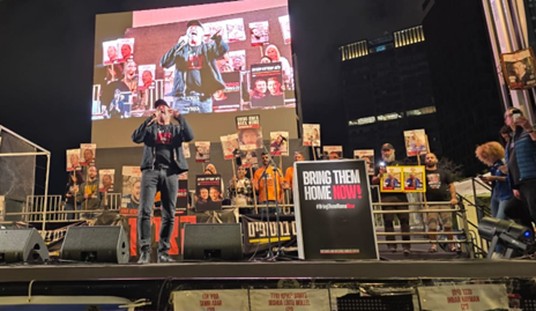The Democratic path to a House majority depending on winning a net gain of 23 seats in the upcoming midterms. Every seat Republicans can flip makes that task more difficult in an environment that suddenly doesn’t look as friendly to Democrats. Two open seats in Minnesota might give the GOP a head start on protecting its majority, Politico reports this morning, as two retirements in Trump country leave the DFL vulnerable:
In a congressional debate last week, Republican Jim Hagedorn touted his support for “extreme vetting” of immigrants, took shots at California Rep. Maxine Waters and at times sounded as though he was running against Hillary Clinton, saying that if she had won in 2016, “we would’ve lost the country.”
In short, he’s running as a local version of President Donald Trump — and banking on the president lifting him to victory in a Democratic-held House district for the first time in his three congressional campaigns.
Most House Republicans around the country are playing defense this election, as Democrats try to flip 23 districts and take the House majority. But Hagedorn is one of two Minnesota Republicans seeking to flip rural, Democratic-held districts in the other direction — a key piece of Republicans’ narrow hopes of retaining the House.
Winning those districts would mean that Democrats have to beat another couple of incumbent Republicans elsewhere in the country, potentially making the difference on a close election night. And even as many of those Republicans try to stem shrinking GOP support in the suburbs in the Trump era, Hagedorn is hoping that he can build on the president’s supercharged rural appeal in 2016, when Trump carried Minnesota’s 1st District by double-digits while Democratic Rep. Tim Walz narrowly won reelection.
Democrats appear to have already written off one seat in Minnesota. A recent NYT/Siena poll puts Republican Pete Stauber up 15 points over DFL candidate Joe Radinovich, 49/34, three weeks out from the election. The Cook index in MN-08 is R+4, but except for one term in the 112th Congress by Chip Cravaack, it has been a Democratic seat for the last 72 years. Rick Nolan, the Democratic incumbent, retired from Congress to run for lieutenant governor on Lori Swanson’s ill-advised gubernatorial ticket, losing badly in the DFL primary.
The key in MN-08 is Donald Trump’s popularity. He won the district by 15 points too, 54/39, over Hillary Clinton two years ago. Trump also won MN-01 by 15 points with a Cook index of R+5, although Walz just barely hung on to beat Hagedorn by less than a percentage point in 2016. This time around, the DFL doesn’t have the advantage of incumbency, and thanks to the Kavanaugh effect, the advantage of low turnout and enthusiasm among Republicans. His DFL challenger Dan Feehan is trying to counter these currents by running a more local campaign, but with Democrats talking about impeachment and investigations into Trump and Brett Kavanaugh, these races have been nationalized enough that even a reversion to type in MN-01 will likely give Hagedorn at least a narrow margin of victory.
If Republicans pick up both seats, they may only net a gain of one, however, or perhaps even a wash. Another NYT/Siena poll taken in the middle of the Kavanaughcalypse put incumbent Republican Jason Lewis down 12 points to DFL challenger Angie Craig, 51/39, in a rematch from 2016 in MN-02. That one looks more outlier-ish; a Survey USA poll from mid-September only had Craig up three, 48/45. The 2nd CD was a Republican stronghold while John Kline held the seat, but the district has been drifting politically to the DFL for years. More of the state legislative seats in this district have gone to Democrats. Lewis’ long history as a provocative radio talk-show host has given Craig more soundbites, and she’s running heavy in the ad cycles so far in the Twin Cities market. Lewis is far from out of it, but he’s got a tough row to hoe.
Similarly, Scott Johnson and John Hinderaker are sounding warning bells in MN-03, where incumbent Republican Erik Paulsen faces a tough challenge from Dean Phillips. Paulsen’s a more experienced candidate than Lewis, with more of a track record of beating expectations in his suburban district, which has also begun to drift away from the GOP. The NYT/Siena poll that put Phillips up nine was taken in early September, well before the Kavanaugh debacle and the resurgence of Republican enthusiasm. The later Survey USA poll — still before the big shift in enthusiasm — put Phillips up five. Both of these seats are still winnable, but it will take a lot of work.
There is, however, a slight possibility of a third GOP pickup. Dave Hughes is challenging Democratic incumbent Collin Peterson in MN-07, an R+12 district that covers most of western Minnesota and which routinely runs red in presidential races. Trump won by 31 points two years ago, while Peterson beat Hughes by only five. There is no public polling aggregated in this race at RealClearPolitics, perhaps a function of how strongly assumed it is that Peterson will win the race. Hughes believes that the winds are behind his back, and to the extent that the Kavanaughcalypse nationalized House races, he may have a shot.
If the GOP can pull off the trifecta of out-state districts, losing MN-02 won’t sting nearly as badly. More importantly, a net gain of three, two, or even one seat in blue Minnesota will put a big dent in Democrats’ hopes to regain the House majority.







Join the conversation as a VIP Member